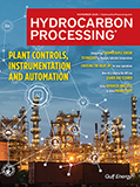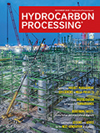New catalyst breakthrough could make clean ammonia easier to produce
Producing ammonia—a key ingredient in fertilizer and a promising hydrogen (H2) energy carrier—traditionally requires lots of energy and fossil fuels. But a new study offers a more efficient, greener method for making ammonia using only nitrogen from the air and water, with help from electricity.
Huixin He, associate professor in the School of Arts and Sciences, Rutgers-Newark and an affiliate of the Rutgers Climate and Energy Institute, is one of the corresponding authors of this study, published in ACS Energy Letters.
In this study, the authors developed tungsten-based nanocatalysts featuring a unique ‘heterogeneous interfacial complexion’ structure. This structure enables the generation of hydrogen atoms from water electrolysis and uses them in a smart way that more easily converts molecular nitrogen into ammonia.

Unlike current industrial ammonia production methods that require very high heat and pressure, this new approach works under room temperature using electricity—making it a better match for renewable energy sources like wind and solar. This technology also avoids making harmful byproducts and significantly reduces competition from unwanted chemical reactions that often lower ammonia output.
Another standout feature of this work is their microwave-assisted method to create the nanocatalyst in just 15 minutes, a dramatic improvement over conventional methods that require 24 hours. This fast, energy-efficient process aligns well with scalable, sustainable manufacturing goals.
Even more impressively, the nanocatalyst was fine-tuned using a low-temperature plasma process, enabling it to more efficiently produce ammonia while avoiding harmful byproducts and side reactions.
This innovation could pave the way for decentralized, low-emission ammonia production—an important step toward cleaner fertilizers and safer H2 storage.






Comments